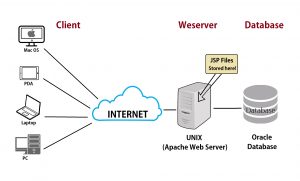Introduction
In the vast geography of web servers, one name stands out as a foundation of the internet’s structure- the Apache HTTP Server, generally known as Apache. Born in themid-1990s, Apache has grown to come the most extensively used web server software encyclopedically. Its open- source nature, robust features, and rigidity have made it a favored choice for developers, administrators, and organizations of all sizes.
Installing the Apache HTTP Server on your local machine is a fundamental step in web development and testing. By setting up a local server environment, you can develop, debug, and experiment with websites and web applications before deploying them to a live server.

A Brief History
The story of Apache begins in 1995 when a group of webmasters formed the Apache Group to enhance the NCSA HTTPd web server. Their collaboration redounded in the release of Apache1.0 in 1995. The software’s name, Apache, was chosen to pay homage to the Native American Apache lineage, reflecting the group’s thing of creating software that’s both strong and interoperable.
Key Features and Functionality
Open Source Advantage
Apache’s open- source license, which permits free use, revision, and distribution, has contributed significantly to its fashionability and wide relinquishment.
Modularity
One of Apache’s most identifying features is its modular armature. The server’s core functionalities are divided into separate modules that can be enabled or disabled as demanded. This design provides inflexibility, allowing administrators to tailor the server’s geste to meet specific condition.
Inflexibility
Apache can serve static content like HTML lines and images, but it can also handle dynamic content using colorful programming languages and technologies. It supports Common Gateway Interface( CGI), FastCGI, PHP, Perl, Python, and more.
Virtual Hosting
Apache supports virtual hosting, allowing multiple websites to be hosted on a single server. This point is essential for participated hosting surroundings and large- scale deployments.
Security
Apache offers a range of security features, including SSL/ TLS support, Secure Sockets Layer( SSL) encryption, and access control through password protection, IP- based restriction, and more.
URL
Rewriting Apache’smod_rewrite module enables sophisticated URL manipulation, allowing developers to produce clean, user-friendly URLs while internally mapping them to complex query strings.
Popular Use Cases
Static Websites
Apache is frequently used to serve static websites, using its simplicity and effectiveness to deliver HTML, CSS, JavaScript, and image lines to users’ browsers.
Dynamic Applications
With its support for colorful programming languages and frameworks, Apache is generally used to run dynamic web applications powered by technologies like PHP, Python, and Ruby on Rails.
Proxy Server
Apache’smod_proxy module allows it to serve as a rear proxy, encouraging requests from guests to backend waiters. This is useful for load balancing, caching, and security.
Content Management Systems( CMS)
Numerous popular CMS platforms like WordPress and Joomla can be hosted on Apache servers, serving from its comity and versatility.
Prerequisites
Before you begin, ensure that you have the following prerequisites:
- Operating System: This guide assumes you are using a Windows, macOS, or Linux-based operating system.
- Administrator Access: You may need administrative privileges on your computer to install software.
- Basic Command Line Knowledge: Familiarity with using the command line or terminal will be helpful.
Conclusion
The Apache HTTP Server’s enduring fashionability can be attributed to its strong foundations, rigidity, and the cooperative spirit of the open- source community. Its capability to feed to a wide range of use cases, coupled with its security features and modular architecture, has solidified its position as a stalwart in the world of web servers. Whether serving static content or running complex applications, Apache continues to play a vital part in shaping the digital geography.
Leave a Reply